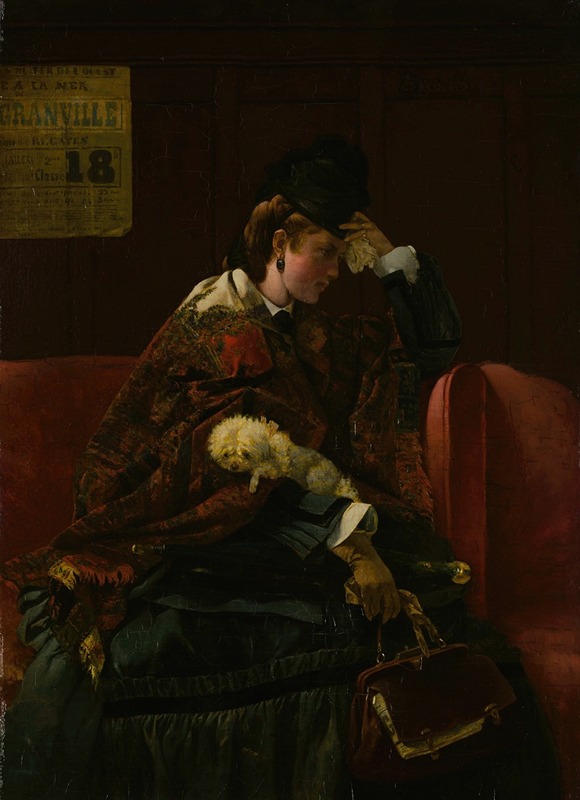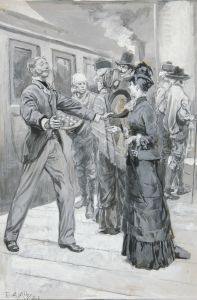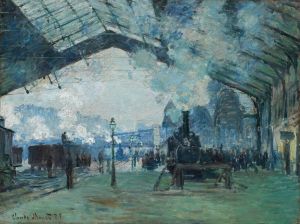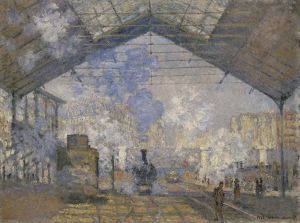
At the Railway Station
A hand-painted replica of Alfred Stevens’s masterpiece At the Railway Station, meticulously crafted by professional artists to capture the true essence of the original. Each piece is created with museum-quality canvas and rare mineral pigments, carefully painted by experienced artists with delicate brushstrokes and rich, layered colors to perfectly recreate the texture of the original artwork. Unlike machine-printed reproductions, this hand-painted version brings the painting to life, infused with the artist’s emotions and skill in every stroke. Whether for personal collection or home decoration, it instantly elevates the artistic atmosphere of any space.
"At the Railway Station" is a painting by the Belgian artist Alfred Stevens, created in 1871. Alfred Stevens was a prominent figure in the 19th-century art scene, known for his detailed and elegant depictions of contemporary life, particularly focusing on women in various social settings. This painting is a prime example of his work during this period.
The painting captures a moment at a railway station, a setting that was becoming increasingly significant in the 19th century due to the expansion of the railway network, which revolutionized travel and communication. The scene is set in a bustling station, with a woman as the central figure. She is dressed in the fashionable attire of the time, which Stevens meticulously rendered, showcasing his skill in portraying textiles and the nuances of contemporary fashion.
The woman in the painting appears to be waiting, possibly for a train or for someone to arrive. Her expression and posture convey a sense of anticipation or contemplation, adding a narrative element to the work. The background features other figures and elements typical of a railway station, such as luggage and architectural details, which help to situate the scene in its specific context.
Stevens' use of light and color in "At the Railway Station" is notable. He employs a soft, naturalistic palette that enhances the realism of the scene while also imbuing it with a certain elegance. The careful attention to detail in the woman's clothing and the surrounding environment reflects Stevens' interest in capturing the subtleties of modern life.
This painting is part of Stevens' broader oeuvre, which often explored themes of modernity, social change, and the roles of women in society. His works are characterized by their refined technique and the ability to convey the complexities of his subjects' inner lives through their outward appearances.
"At the Railway Station" is held in the collection of the Musée d'Orsay in Paris, which houses many significant works of 19th-century art. The painting is appreciated not only for its aesthetic qualities but also for its historical significance, offering insights into the social and cultural dynamics of the time.
Alfred Stevens' contribution to art extends beyond his paintings; he was also a respected teacher and a key figure in the artistic circles of his day. His works continue to be studied and admired for their technical excellence and their ability to capture the spirit of an era.
In summary, "At the Railway Station" by Alfred Stevens is a masterful depiction of a moment in 19th-century life, rendered with great attention to detail and a deep understanding of the social context of the time. The painting remains an important piece in the study of both Stevens' work and the broader trends in art and society during the period.


















